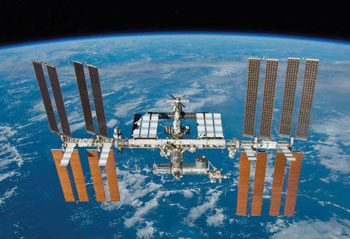Coatings Technology Blog
How Engineered Coatings Prevent Equipment Failure in Aerospace Applications

Aerospace environments involve some of the toughest conditions for equipment. Threats like friction, galling, corrosion and high temperatures can cause some of the industry’s most common metals and alloys to fail. And if a part fails, it can be impossible to access or too costly to repair or replace.
Engineered coatings address these challenges by creating dry, lubricated surfaces that protect critical components from wear and weather—maximizing their lifespan in demanding aerospace applications.
Common Threats to Aerospace Parts
Some of most common threats to aerospace equipment include the following.
Fretting, galling and friction. Fretting and galling occur when sliding metal surfaces such as aluminum and titanium alloys generate friction and stick together under heavy loads—like when a spacecraft leaves or re-enters Earth’s atmosphere. These conditions can cause wear, fatigue and seizing on critical components.
The best coatings to overcome fretting and galling offer a low coefficient of friction (COF) and create a hard, fracture-free surface.
Corrosion. When aerospace components—especially ones made from aluminum—suffer from corrosion, they lose their durability. Corrosion is a constant threat to metal parts that make up an aircraft's structure and can even result in pitting in humid or saltwater conditions.
Engineered coatings are well-suited for aluminum alloys, allowing them to replace more expensive substrates while protecting them from corrosion.
Extreme Temperatures. Aerospace components must be able to withstand both high heat and extreme cold while still operating with total reliability. Engineered coatings can protect surfaces in a variety of thermal environments. Some even boast a -200° to +1,300°F temperature range.
Outgassing. Coatings infused with supplementary polymers or dry film lubricants can protect materials such as magnesium alloys against outgassing—especially if parts are exposed to vacuum or heat conditions.
How Engineered Coatings Protect Various Metals
Now, let's turn our attention to some popular materials used in aerospace components, as well as the ways our engineered coatings protect them in extreme environments:
- Aluminum: Tufram® has a low COF and can withstand a wide temperature range, enabling it to be used aboard spacecraft.
- Titanium alloys: Canadize® lowers the COF and protects parts against wear, abrasion, adhesion, galling and seizing.
- Magnesium: Magnadize® features a very low COF and protects surfaces against wear and outgassing in vacuum environments.
- Common metal alloys: Nedox® provides good protection against wear, friction, galling and corrosion and is listed as NASA material #20386.
Meeting Aerospace Challenges for Over 65 Years
For over 65 years, we've developed coatings for the aerospace industry that protect popular, lightweight metals and alloys from the harsh conditions of space. Our newly expanded facility is AS9100:D certified, which means we meet the industry’s highest standards.
For more information about our engineered coatings for aerospace applications, visit our industry page.